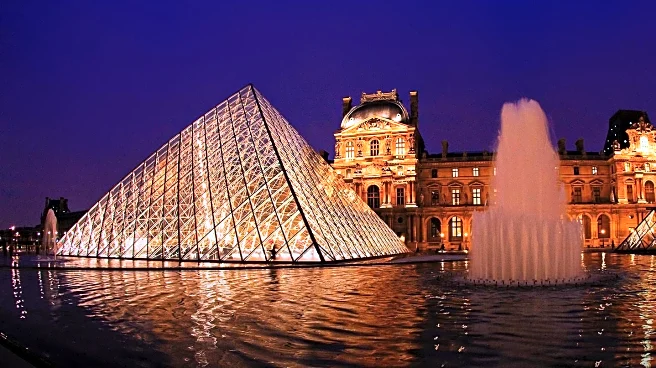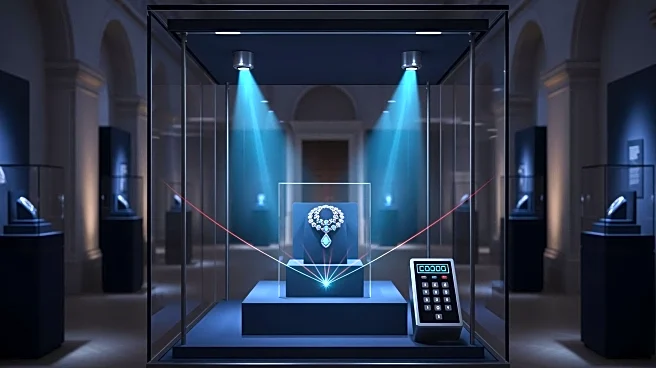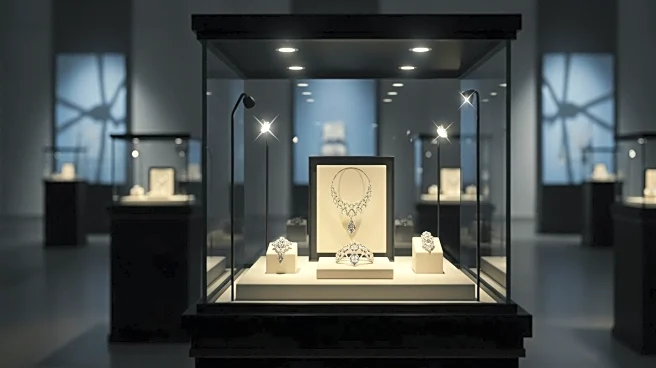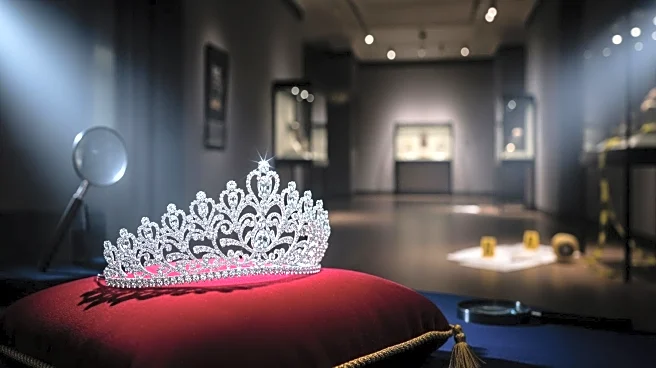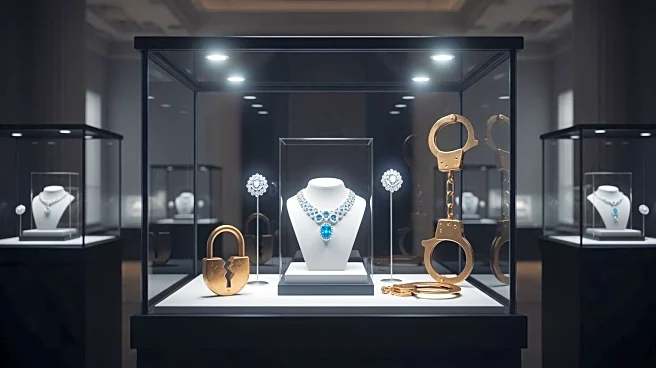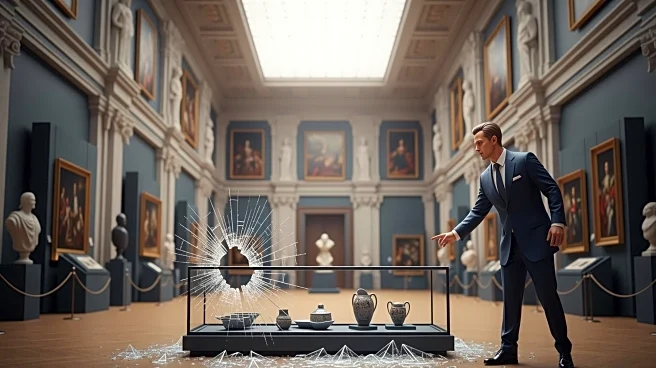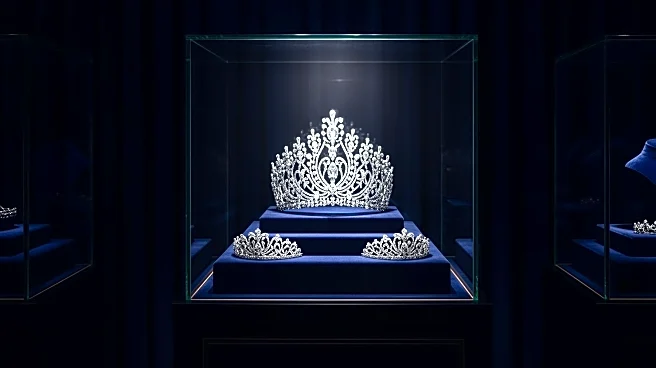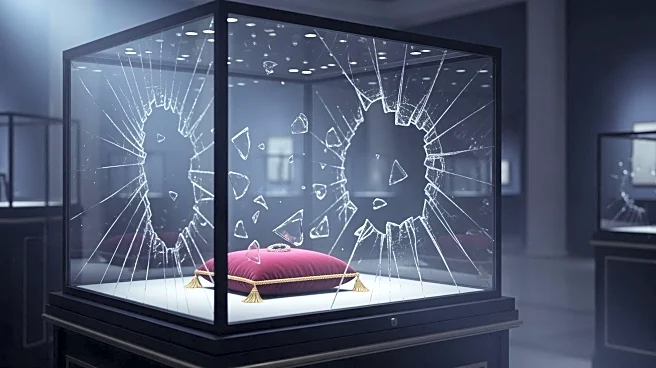What's Happening?
A major investigation is underway following a daring heist at the Louvre Museum in Paris, where thieves stole jewels valued at approximately 88 million euros. The theft involved a sapphire diadem, necklace,
and earring linked to 19th-century queens. French authorities have detained two suspects, with one apprehended at a Paris airport attempting to leave the country. Over 100 investigators are involved, analyzing DNA samples and surveillance footage to recover the stolen items and apprehend additional suspects.
Why It's Important?
The heist at the Louvre, one of the world's most visited museums, underscores the vulnerabilities in securing cultural heritage sites. The theft of such high-value items not only represents a significant cultural loss but also highlights the challenges faced by law enforcement in protecting valuable artifacts. The incident may prompt museums worldwide to reassess their security measures and collaborate more closely with international law enforcement agencies to prevent similar occurrences. The case also raises questions about the effectiveness of current security protocols in high-profile cultural institutions.
What's Next?
As the investigation progresses, French authorities are expected to release more details once the suspects' custody period ends. The focus will be on recovering the stolen jewels and identifying any additional accomplices. The case may lead to increased security measures at museums globally and could influence policy changes regarding the protection of cultural assets. International cooperation, particularly through organizations like Interpol, will be crucial in tracking and recovering the stolen items.
Beyond the Headlines
The Louvre heist highlights the ongoing tension between public access to cultural heritage and the need for security. As museums strive to make art accessible to the public, they must also contend with the risk of theft. This incident may spark a broader discussion about the balance between openness and security in cultural institutions. Additionally, the case illustrates the complexities of international art crime investigations, where legal and cultural considerations intersect.
